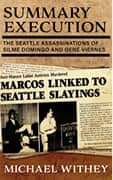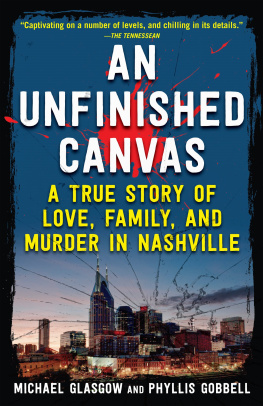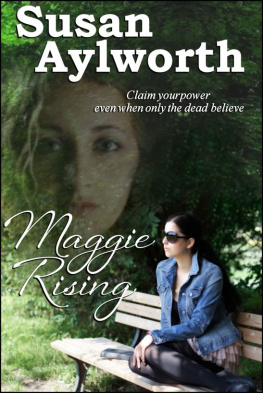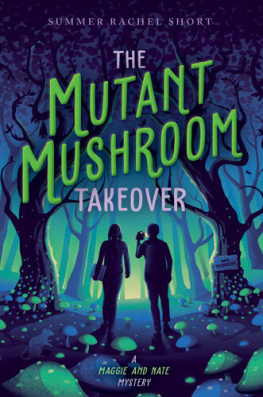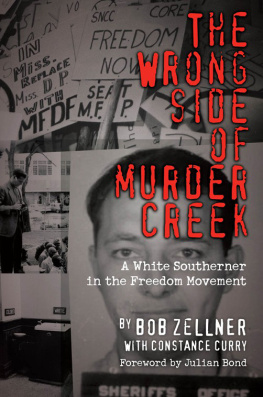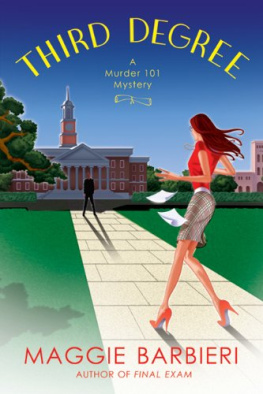
Published by The History Press
Charleston, SC 29403
www.historypress.net
Copyright 2014 by Blaine Pardoe and Victoria Hester
All rights reserved
First published 2014
e-book edition 2014
ISBN 978.1.62585.059.1
Library of Congress Cataloging-in-Publication Data
Pardoe, Blaine.
The murder of Maggie Hume : cold case in Battle Creek / Blaine Pardoe, Victoria Hester.
pages cm. -- (True crime)
print edition ISBN 978-1-62619-527-1 (paperback)
1. Hume, Maggie. 2. Murder--Michigan--Battle Creek. 3. Cold cases (Criminal investigation)--Michigan--Battle Creek. I. Hester, Victoria. II. Title.
HV6534.B385P37 2014
364.1523092--dc23
2014028463
Notice: The information in this book is true and complete to the best of our knowledge. It is offered without guarantee on the part of the authors or The History Press. The authors and The History Press disclaim all liability in connection with the use of this book.
All rights reserved. No part of this book may be reproduced or transmitted in any form whatsoever without prior written permission from the publisher except in the case of brief quotations embodied in critical articles and reviews.
To Maggie Hume. We didnt know you, but we will never forget you.
CONTENTS
ACKNOWLEDGEMENTS
When you work on a project like this, you have to start with an open mind and go where the evidence takes you. This book took us on a journey as father and daughter. This product is not the book we set out to write; it is much moremuch better.
In the writing of this book, we have consolidated some of the interviews of witnesses to make the flow of the text easier. In this particular case, some witnesses were interviewed three or more times, and detailing those in the book chronologically might be confusing for a reader. In order to assist you, we have a detailed timeline in the back of the book to help you reconcile the events.
We were forced to change the name of one person in the book, which is indicated by an asterisk (*). This individual has been interviewed by police several times but has received threats as a result of his cooperation and asked these authors to protect his identity. There were also several people who passed us information under the auspices of anonymity.
Some phrases in the book are used interchangeably, such as Snug Sack/Snuggle Sack. This was a generic term used to describe a light sleeping bag during the period. Since multiple descriptions were used in the police reports, we have opted to keep them all as they appeared.
Many people played a part in the research and preparation of this book. Special thanks goes out to the following:
Mandi Zimmerman, Calhoun County Sheriffs Department, who was one of the first people to reach out and say to us, You need to look into this case. Mandi made some great behind-the-scenes connections that helped make this book practical.
William Howe, formerly of the Calhoun County Prosecutors Office. To be blunt, this book would have been a struggle without Bills insights, perspective, history and objectivity. He was our conscience and someone dedicated to the resolution of this case, even in retirement.
John Hume, Maggies brother, who was kind enough to tolerate our intrusions.
Mary Smock (Landstra), one of Maggies closest friends and a wonderful source of stories of her dear friend.
Victoria Houser, Battle Creek city clerk, who tolerated us during a blizzard while we performed our research.
Norma Landstra, close friend of the Hume family.
Nancy Mullett, former assistant prosecuting attorney, Battle Creek.
Joe Newman, former sergeant/detective in charge of the Detective Bureau.
Alan Tolf, former detective assigned to the Hume case. Alan was a wonderful source for the early days of the investigation.
Elwood Priess, former investigator on the Hume case.
Jeff Kabot, former assistant prosecuting attorney, Battle Creek. Jeff, like us, buried himself in the details of this case.
Kevin Danielson*.
Mike Sherzer, former Battle Creek police lieutenant and Battle Creek city councilman.
Kathryn Dunham, Kellogg Community College archivist.
Dennis Mullen, former detective assigned to the Hume case.
Jon Sahli, former prosecutor, Calhoun County.
George Livingston, local historian, Willard Library.
Susie Richter, curator, LaPorte County Historical Society.
Stephanie Hsu, photographer.
Carol L. Miknis.
Randy Reinstein, deputy inspector, Battle Creek Police Department.
Rose Pardoe, mother/grandmother of the authors, who helped us with lodging and sending us some research material.
Steve Jones, for his history of the Ritzee chain.
Cyndi Pardoe, who tolerated countless hours of us talking about this book.
INTRODUCTION
I got hot but never got burned
Well, all I know is she should have learned
Get too close youll fall right in
You should have known, you cant do that now
Looking Out for Number One, Cheap Trick
Unsolved murders gnaw at the minds and consciences of people. An unsolved homicide means that someone got away with the worse crime possiblethe taking of another human life. They are the things that keep us up at night. These murderers get to continue to live their lives, while the victims and those close to them are left without closure, without justice. These kinds of cases mean that a killer may yet be walking among us. It could be a neighbor, a co-worker or that man ahead of you at Walmart.
People abhor the unsolved cases because it means that our system of law enforcement has somehow failed. We wonder why justice was not served. We want answers and, in the case of a book, a proper ending. We want balance restored in our livesthe gap filled by the loss of an innocent person to be countered with someone being held to account for the crime. If we cannot have justice, we, at least, demand answers.
This has rarely been more accurate than in the case of Maggie Hume. Her family was well known and beloved in the community. The family was integral to the close-knit Catholic community in Battle Creek, especially at St. Philip Catholic School. Here was a young woman, charming and compassionate, who was horribly assaulted and strangled. Her life was a stark contrast to her death. There was a sense of, If this could happen to these good churchgoing people, it could happen to anyone. Eyes turn to a succession of prosecutors and investigators wondering, Why didnt anyone ever get brought to trial for this crime? When answers didnt come, speculation and recrimination filled the emotional gap.
To just lay the blame at the feet of the police and prosecutors isnt fair either. The courts, local and national politicians, defense attorneys and the misguided press all played a role in this denial of justice. As one investigator told us, some of the victims friends and associates became uncooperative over time. Having moved on from sowing the wild oats of their youth, they had children of their own and didnt want to reopen their own semi-raucous pasts. Certainly we were surprised when some of the individuals we reached out to declined interviews.
What the public knew about the case came from the newspapers and television and was a distorted impression at best. It wasnt the medias fault; few of them ever got exposed to the intricacies of the case. To them, it was merely a story that played out over the decades. There was a confession in the case, but prosecutors did not accept it at face value. The reasons for this were never explained to the public. There were the bizarre links to other murders and crimes in the area. All of this led to more questions than answers.
Next page

